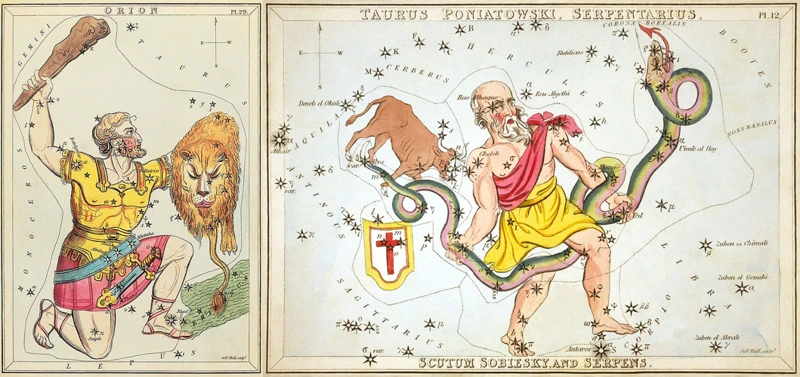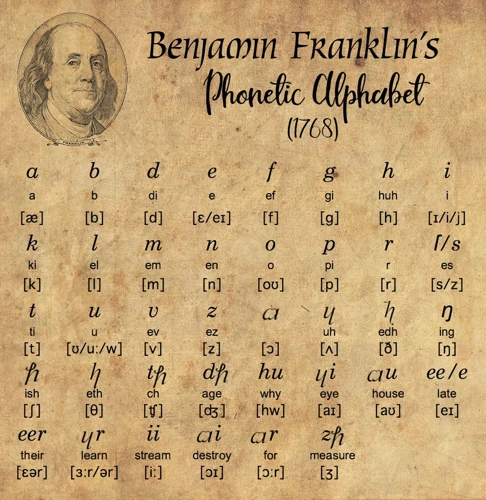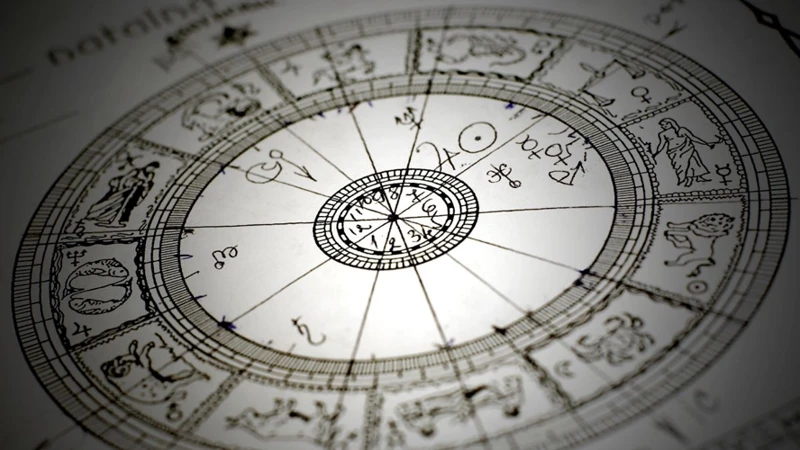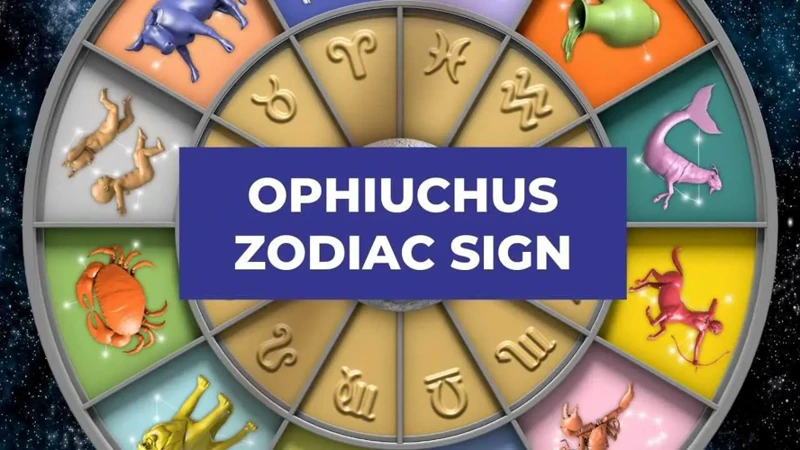It is fascinating to contemplate the origins of writing and how it has evolved over time. The human desire to communicate and record information stretches back thousands of years, and as societies developed, so too did their methods of conveying meaning through symbols. From the earliest pictograms and ideograms to the complex systems of ancient civilizations like the Egyptians and the Mayans, writing has played a pivotal role in shaping our understanding of the past. This article dives deep into the incredible journey of writing systems; exploring their beginnings, their transformations, and their enduring impact on our world today. Join us on this exploration as we investigate the rich tapestry of the evolution of writing.
Contents
- The Dawn of Symbolic Communication
- The Birth of Phonetic Writing
- Other Ancient Writing Systems
- Modern Writing Systems
- Conclusion
-
Frequently Asked Questions
- 1. What is the significance of symbolic communication in human development?
- 2. How did pictograms and ideograms contribute to early writing systems?
- 3. What is the difference between pictograms and ideograms?
- 4. How did the development of writing systems impact ancient civilizations?
- 5. What were the key features of the Phoenician alphabet?
- 6. How did the Greek alphabet evolve from the Phoenician alphabet?
- 7. What made the Latin alphabet dominant and adaptable?
- 8. How did Chinese characters become an intricate writing system?
- 9. What makes Mayan hieroglyphs a marvel in Mesoamerica?
- 10. Why is the Arabic script renowned for its refined calligraphy?
- References
-
Frequently Asked Questions
- FAQs about the Evolution of Writing Systems
- 1. How did writing systems develop?
- 2. What is the significance of cuneiform?
- 3. Which civilization used Egyptian hieroglyphs?
- 4. How did the Phoenician alphabet simplify communication?
- 5. What role did the Greek alphabet play in the development of writing systems?
- 6. When did the Latin alphabet gain dominance?
- 7. How do Chinese characters work?
- 8. What were Mayan hieroglyphs used for?
- 9. How did Olmec writing contribute to the development of writing systems in the Americas?
- 10. What makes the Arabic script unique?
- References
- Read More
The Dawn of Symbolic Communication

The Dawn of Symbolic Communication marked a significant turning point in human history. As early civilizations began to develop, the need to represent ideas and concepts through symbols became essential for effective communication. This led to the emergence of pictograms and ideograms as the earliest forms of written expression. Pictograms, which are visual representations of objects or concepts, allowed people to convey basic information through simple images. Ideograms, on the other hand, represented abstract ideas or actions. These early forms of writing provided a foundation for human communication, enabling our ancestors to express their thoughts and record important information. While limited in their scope, pictograms and ideograms laid the groundwork for the more complex writing systems that would follow. The evolution of symbolic communication was crucial in shaping the way we perceive and understand the world today. From these humble beginnings, writing systems would continue to evolve and adapt to the changing needs of societies throughout history.
1. Pictograms and Ideograms
Pictograms and ideograms were the earliest forms of written expression and played a crucial role in the development of writing systems. Pictograms were simple images that represented specific objects, while ideograms conveyed abstract ideas or actions. These visual symbols allowed early civilizations to communicate basic information without relying solely on spoken language. Picture an ancient cave drawing depicting a spear to denote hunting or a sun symbol to represent warmth and light. These primitive forms of communication laid the foundation for future writing systems by providing a means to record information and convey messages across generations. As societies grew more complex, so did the need for more nuanced forms of written expression. Pictograms and ideograms were the stepping stones from which the rich tapestry of writing would eventually emerge, allowing humans to develop more sophisticated ways of preserving knowledge and communicating ideas. Without these early symbols, the evolution of writing would not have been possible.
For more on the impact of symbols and signs on our understanding of the world, check out our article on The Impact of Ophiuchus Sign on Career Success.
2. Cuneiform: The First Known Writing System
Cuneiform, known as the first known writing system, holds a special place in the history of human communication. Developed by the ancient Mesopotamians around 3400 BCE, cuneiform revolutionized written expression by using wedge-shaped marks on clay tablets. These marks, created by pressing a reed stylus into the clay, represented a wide range of phonetic and semantic information. Unlike pictograms and ideograms, cuneiform utilized a combination of symbols to represent both sounds and meanings. The complexity of this system allowed for a more sophisticated form of written communication, enabling scribes to record legal codes, administrative documents, religious texts, and literary works. Cuneiform was widely used in Mesopotamia for over three millennia, spanning various empires and cultures. It played a pivotal role in the transmission of knowledge and has provided invaluable insights into the history, culture, and beliefs of ancient civilizations. The decipherment of cuneiform tablets in the 19th century unlocked a treasury of information, shedding light on the development of ancient societies and their interactions with neighboring regions. The impact of cuneiform on the trajectory of human communication cannot be overstated, as it laid the foundation for future writing systems and paved the way for the preservation of historical records. Despite its ancient origins, cuneiform continues to fascinate scholars and historians, offering a glimpse into the past and a connection to our shared human heritage. For further exploration of ancient civilizations and their contributions, check out our guide on exploring planets in the solar system.
3. Egyptian Hieroglyphs: A Visual Language
Egyptian Hieroglyphs: A Visual Language was an extraordinary writing system that emerged in ancient Egypt around 3100 BCE. Hieroglyphs, which means “sacred carvings,” were a complex combination of pictorial symbols, ideograms, and phonetic signs. This intricate system allowed the ancient Egyptians to express a wide range of ideas and concepts. Hieroglyphs were primarily used for religious and monumental purposes, with inscriptions found on temple walls, tombs, and obelisks. The hieroglyphic script consisted of hundreds of individual signs, each representing a specific word, sound, or idea. Some symbols were purely representational, depicting recognizable objects such as animals or plants, while others carried more abstract meanings. One notable aspect of hieroglyphs was their flexibility in being both phonetic and logographic, meaning they could represent both sound and meaning simultaneously. This made the Egyptian hieroglyphic script a highly developed and expressive visual language. Deciphering the hieroglyphs was a monumental challenge for scholars, and it wasn’t until the discovery of the Rosetta Stone in 1799 that the translation process began. The Rosetta Stone, with inscriptions in both Greek and Egyptian hieroglyphs, provided the key to unlocking the ancient script. Today, the study of Egyptian hieroglyphs allows us to delve into the rich history and culture of one of the world’s greatest civilizations, unraveling the stories and beliefs of the ancient Egyptians. It is a testament to the power and enduring legacy of visual communication.
The Birth of Phonetic Writing

The Birth of Phonetic Writing revolutionized the way humans communicated and recorded language. In contrast to the pictographic and ideographic systems of the past, phonetic writing introduced the concept of representing sounds and speech. The Phoenician Alphabet played a pivotal role in this transformation, simplifying communication by assigning symbols to individual consonant sounds. By combining these symbols, ancient civilizations could create a wide range of words and sentences. This groundbreaking development paved the way for further advancements in writing systems. The Greek Alphabet, derived from the Phoenician Alphabet, expanded upon the phonetic approach by introducing vowel symbols. This refinement improved the accuracy and versatility of written language, allowing for more nuanced expression. The journey of phonetic writing reached its pinnacle with the Latin Alphabet, which is now the most widely used writing system in the world. With its roots in ancient Rome, the Latin Alphabet evolved and adapted over time to suit the needs of different languages and cultures. The transition to phonetic writing marked a significant shift in human communication, enabling greater precision and clarity in written language. This transformative development laid the foundation for the diverse writing systems we have today. For more information on the impact of Ophiuchus, just like the impact that the birth of phonetic writing had on communication, you can check out this fascinating article on unveiling hidden talents with Ophiuchus.
1. Phoenician Alphabet: Simplifying Communication
The Phoenician Alphabet brought about a revolutionary shift in the way communication was conducted. A breakthrough from the pictorial and ideographic systems, the Phoenician Alphabet introduced a more simplified and efficient method of writing. What made this system unique was its use of individual signs to represent distinct speech sounds, known as phonemes. This departure from representing whole words or concepts with symbols allowed for greater flexibility and ease of use. The Phoenician Alphabet consisted of 22 consonant letters, omitting vowels. This absence of vowel representation led to various interpretations and adaptations of the script by different cultures. The Phoenician Alphabet not only facilitated trade and record-keeping for the Phoenician merchants but also became the foundation for several other writing systems. One of the notable descendants of the Phoenician Alphabet is the Hebrew script. The simplicity and adaptability of the Phoenician Alphabet played a pivotal role in shaping future writing systems, ultimately leading to the establishment of more comprehensive and widely used scripts.
2. The Greek Alphabet: From Phoenician to Perfection
The Greek Alphabet, born out of the Phoenician script, stands as one of the most influential writing systems in history. The Phoenicians, renowned seafarers and traders, spread their writing system throughout the Mediterranean. The Greeks adopted this script around the 9th century BCE but made significant modifications to suit their language and needs. They introduced vowels, shifting from a purely consonantal script to a more versatile and efficient system. The Greek alphabet consisted of 24 letters, each representing a distinct sound in their language. This innovation allowed for greater precision and clarity in recording spoken words. The Greek alphabet quickly gained popularity and became the foundation for many subsequent writing systems in Europe, including Latin. In fact, the Latin alphabet that is widely used today is a direct descendant of the Greek alphabet. Its influence is far-reaching, not only in language but also in science, mathematics, and philosophy, as many important texts from ancient Greece were written using this system. The Greek alphabet’s evolution from the Phoenician script to its perfected form was a pivotal development in the history of writing, leaving an indelible mark on civilization.
3. Latin Alphabet: Dominance and Adaptation
The Latin Alphabet, born out of the Phoenician alphabet, has achieved unparalleled dominance and adaptation throughout history. It has become the most widely used writing system in the world, serving as the basis for numerous languages, including English, Spanish, French, and many others. The Latin Alphabet’s success can be attributed to its simplicity and versatility. It consists of 26 letters, each representing a particular sound, making it easy to learn and use. The Romans, who adopted and modified the alphabet to suit their language, played a significant role in spreading its influence across Europe and beyond. As the Roman Empire expanded, so did the use of the Latin Alphabet. Over time, it underwent further modifications, incorporating diacritical marks and additional letters to accommodate the phonetic nuances of different languages. Today, the Latin Alphabet continues to evolve, adapting to the needs of contemporary communication. It has transcended borders and cultural barriers, becoming a truly global writing system. Its dominance and adaptability have solidified its place as a cornerstone of human expression and a testament to the influence of writing systems in shaping our world.
Other Ancient Writing Systems

Other Ancient Writing Systems have left their mark on history, showcasing the diverse ways in which societies across the globe developed methods to communicate through writing. One prominent example is the Chinese Characters, which originated over 4,000 years ago and remain in use to this day. Chinese Characters are logograms, where each character represents a distinct word or concept. With thousands of characters in existence, mastering the Chinese writing system requires immense dedication and study.
In Mesoamerica, the Mayan civilization developed their own intricate system of writing known as Mayan Hieroglyphs. These complex glyphs combined logograms and phonetic elements to convey both meaning and sound. The understanding of Mayan Hieroglyphs was lost for centuries until deciphered by scholars in the 20th century, revealing valuable insights into the Mayan culture and history.
Another fascinating ancient writing system is the Olmec Writing, believed to be the oldest known writing system in the Americas. Dating back to 900 BCE, the Olmec Writing consisted of symbols, glyphs, and human figures that are yet to be fully deciphered. Despite the challenge, the Olmec Writing provides glimpses into the beliefs and daily life of this ancient civilization.
Each of these ancient writing systems offers a unique glimpse into the complexity and beauty of human communication. From the intricate Chinese Characters to the enigmatic Olmec Writing, these systems demonstrate the ingenuity and diversity of human cultures throughout history. The deciphering of these ancient scripts has provided us with valuable insights into the thoughts, beliefs, and daily lives of our ancestors.
1. Chinese Characters: An Intricate System
The Chinese writing system, known for its intricate and fascinating nature, has a long and rich history. Chinese characters, also known as Hanzi, are logograms that represent words or concepts rather than individual sounds. Each character is composed of various strokes, which are combined to create a visually complex and unique symbol. These characters are not phonetic, meaning that they do not directly represent spoken sounds. Instead, they convey meaning through their visual representation and placement within a sentence. Chinese characters are highly versatile, as they can be used across different Chinese dialects and even in other East Asian languages like Japanese and Korean. The complexity of the Chinese writing system lies in the vast number of characters, with estimates ranging from tens of thousands to over 100,000 in total. Mastery of this intricate system requires years of study, as each character must be learned individually. Despite its challenges, the Chinese writing system continues to be an integral part of Chinese culture and identity, representing a powerful link to the past and an enduring symbol of cultural heritage.
2. Mayan Hieroglyphs: A Marvel in Mesoamerica
Mayan Hieroglyphs stand as a marvel in Mesoamerica and are considered one of the most intricate writing systems in the world. Developed by the ancient Maya civilization, these hieroglyphs were a combination of logograms, which represented whole words or concepts, and phonetic glyphs, which represented syllables. The Maya used a wide range of symbols, including human figures, animals, plants, and abstract shapes to convey their ideas. The complexity of the Mayan Hieroglyphs is astounding, with over 800 distinct symbols identified in their script. This intricate system allowed the Maya to record historical events, convey religious and mythological stories, and document their astronomical observations. While deciphering Mayan Hieroglyphs was a monumental task that puzzled scholars for centuries, significant progress has been made in recent years. The breakthrough came with the discovery of the Rosetta Stone of the Maya, the Dresden Codex, which provided crucial insights into the language and symbolism used in the hieroglyphs. Today, researchers continue to unravel the mysteries of the Mayan Hieroglyphs, giving us a deeper understanding of the rich culture and history of the ancient Maya civilization.
3. Olmec Writing: The Oldest Known Writing System in the Americas
The Olmec civilization, which thrived in Mesoamerica from around 1500 BCE to 400 BCE, is credited with developing the oldest known writing system in the Americas. The Olmec writing system, also known as the Olmec hieroglyphic script, is a complex system of symbols that were carved into stone monuments and artifacts. These hieroglyphs represent a wide range of subjects, including human figures, animals, plants, and abstract concepts. The exact meaning of many of these symbols is still not fully understood, contributing to the mysterious nature of the Olmec writing system. Researchers believe that the Olmec script was primarily used for ceremonial and religious purposes, as it is often found on monuments and objects associated with rituals. The decipherment of this ancient script has posed many challenges, and while progress has been made in understanding certain elements of the Olmec writing, much of it remains undeciphered. The Olmec writing system provided a foundation for future Mesoamerican civilizations, such as the Maya and the Aztecs, who developed their own writing systems based on the achievements of the Olmec civilization. The legacy of the Olmec script continues to intrigue archaeologists and historians, offering valuable insights into the cultural and intellectual achievements of this ancient civilization.
Modern Writing Systems

Modern Writing Systems have evolved significantly from their ancient predecessors. One notable example is the Arabic Script, renowned for its exquisite calligraphy and rich history. This script, which originated in the Arabian Peninsula, is used to write numerous languages, including Arabic, Persian, Urdu, and more. Its interconnected letters and intricate diacritic marks create a visually stunning script that has become synonymous with Islamic culture. Another prominent modern writing system is the Devanagari Script, widely used in India for languages such as Hindi, Sanskrit, and Marathi. Known for its distinctive rounded characters, this script has played a vital role in preserving and promoting Indian literature and culture. The Hanacaraka Script, native to the Javanese language of Indonesia, is yet another intriguing modern writing system. It consists of a set of characters that represent syllables and is widely used for both written and spoken Javanese. Each of these modern writing systems tells a story of cultural heritage, identity, and the power of written language to preserve and convey meaning across generations. The ongoing development and adaptation of writing systems continue to shape the way we communicate in the modern world.
1. Arabic Script: A Script of Refined Calligraphy
The Arabic script is widely recognized for its exquisite calligraphy and elegant aesthetic. With its origins dating back to the 4th century CE, this script has evolved over time to become one of the most visually striking writing systems in the world. The Arabic script is written from right to left and consists of 28 letters, each with different forms depending on their position in a word. The art of Arabic calligraphy requires precision and skill, with calligraphers honing their craft to create beautifully intricate and harmonious compositions. This script has been integral to the dissemination of Islamic literature and the preservation of Quranic texts. It has also influenced the design of architecture, textiles, and decorative arts in the Islamic world. The Arabic script, with its fluid lines and mesmerizing patterns, has the power to evoke a sense of beauty and spirituality. It is a testament to the ingenuity of human expression through the written word, showcasing the rich cultural heritage and artistic traditions of the Arabic-speaking world.
2. Devanagari Script: The Core of Indian Languages
The Devanagari Script holds a significant place as the core writing system for numerous Indian languages. Derived from the ancient Brahmi script, Devanagari is characterized by its distinctive ligatures and intricate letterforms. The word “Devanagari” itself translates to “the script of the gods,” emphasizing its sacred and revered status in Indian culture. With its origins dating back to the 7th century AD, the Devanagari Script has been instrumental in preserving and conveying a vast range of Indian languages, including Hindi, Sanskrit, Marathi, and Nepali, among others.
One of the notable features of Devanagari is its inherent phonetic nature. Each character represents a specific sound or syllable, making it a highly precise writing system. The script consists of a core set of consonants, known as “Vyanjanas,” which are combined with vowel signs, called “Matras,” to form complete syllables.
Devanagari is not only a writing system but also an integral part of Indian cultural identity. It has been used for centuries to transcribe sacred Hindu texts, including the Vedas and the Upanishads. Additionally, it has played a crucial role in preserving classical works of literature and poetry in languages such as Sanskrit.
The influence of the Devanagari Script extends beyond India’s borders, as it is also used in neighboring countries like Nepal and Bhutan. Its adaptability and versatility have allowed it to remain a vibrant and widely used writing system to this day.
The Devanagari Script stands as a testament to the rich linguistic diversity of India and the invaluable role that writing systems play in preserving and perpetuating cultural heritage. Its complex and aesthetically pleasing characters continue to serve as a visual representation of the depth and beauty of Indian languages, making it an integral part of the country’s linguistic and cultural landscape.
3. Hanacaraka: The Javanese Script
The Hanacaraka script, also known as the Javanese script, is a writing system that holds great cultural and historical significance. Originating in ancient Java, Indonesia, this script is renowned for its unique and intricate characters. The Hanacaraka script is an abugida, which means that each character represents a consonant with an inherent vowel sound. However, unlike other abugidas, Hanacaraka utilizes a complex system of diacritic marks to modify the inherent vowel sounds. This allows for a greater level of precision in pronunciation. The script consists of a total of 20 characters, which are organized into five syllable groups. Each syllable group represents a particular sound in the Javanese language. Interestingly, the Hanacaraka script is not only used for writing Javanese but also for other regional languages in Indonesia, such as Balinese and Sasak. The script continues to be taught and preserved, ensuring its legacy as an integral part of Javanese culture. Whether used in literature, religious texts, or everyday communication, the Hanacaraka script stands as a testament to the rich linguistic heritage of Java and the enduring power of writing systems in connecting communities and preserving languages.
Conclusion

In conclusion, the journey of writing systems has been a remarkable one, spanning thousands of years and encompassing a wide array of cultures and civilizations. From the dawn of symbolic communication with pictograms and ideograms to the birth of phonetic writing with the Phoenician and Greek alphabets, and the intricacy of writing systems like Chinese characters and Mayan hieroglyphs, the evolution of writing has shaped the course of human history and knowledge. The adaptability and versatility of writing systems have allowed for the transmission of ideas, stories, and information across generations and continents. Today, with modern writing systems like the Arabic script, Devanagari script, and Hanacaraka, writing continues to play a vital role in our interconnected world. It is a testament to the ingenuity and inventiveness of humanity that we have developed such diverse and sophisticated means of communication. As we reflect on the origins and development of writing, we gain a deeper appreciation for the power of written language and its enduring impact on our lives. The evolution of writing systems is a testament to our innate desire to understand, express, and connect with one another through the written word, transcending boundaries and enriching our collective knowledge.
Frequently Asked Questions

1. What is the significance of symbolic communication in human development?
Symbolic communication was a crucial development in human history as it allowed for the representation of ideas and concepts through symbols. This enabled more complex and efficient communication, leading to the exchange of knowledge, the development of societies, and the preservation of information.
2. How did pictograms and ideograms contribute to early writing systems?
Pictograms and ideograms were the earliest forms of written expression, allowing people to convey information through visual representations of objects, concepts, or abstract ideas. They laid the foundation for more complex writing systems to emerge by providing a means to communicate basic information.
3. What is the difference between pictograms and ideograms?
Pictograms are visual representations of objects, while ideograms represent abstract ideas or actions. Pictograms are more concrete and direct, whereas ideograms require the use of symbols to represent less tangible concepts.
4. How did the development of writing systems impact ancient civilizations?
The development of writing systems had a profound impact on ancient civilizations. It facilitated the recording of historical events, the dissemination of knowledge, the growth of trade and commerce, and the organization of societies. Writing systems were essential tools for cultural, economic, and political development.
5. What were the key features of the Phoenician alphabet?
The Phoenician alphabet was a significant advancement in writing systems as it introduced the concept of using individual symbols to represent specific sounds. This phonetic approach simplified communication and paved the way for more efficient writing systems to develop in the future.
6. How did the Greek alphabet evolve from the Phoenician alphabet?
The Greek alphabet was derived from the Phoenician alphabet, but it introduced vowel sounds and additional letters to accommodate the unique sounds of the Greek language. This adaptation allowed for a more accurate representation of Greek sounds and contributed to the spread of Greek culture and knowledge.
7. What made the Latin alphabet dominant and adaptable?
The Latin alphabet gained dominance through the widespread influence of the Roman Empire. Its adaptability was evident as it was adopted by various languages, including English, Spanish, French, and many more. It became the foundation for numerous Western writing systems and is still widely used today.
8. How did Chinese characters become an intricate writing system?
Chinese characters are ideographic, with each character representing a word or an idea. The complexity of the Chinese writing system lies in the sheer number of characters, as well as the stroke order and composition rules. It requires significant practice and memorization to achieve proficiency in reading and writing Chinese.
9. What makes Mayan hieroglyphs a marvel in Mesoamerica?
Mayan hieroglyphs were a complex system of writing that combined both phonetic and ideographic elements. The intricate carvings and attention to detail in Mayan hieroglyphic texts have provided valuable insights into the Mayan civilization, including their culture, history, and astronomical knowledge.
10. Why is the Arabic script renowned for its refined calligraphy?
The Arabic script is known for its exquisite calligraphy, which is considered an art form in many cultures. The flowing nature of Arabic script and its distinct letter shapes make it aesthetically pleasing. This has contributed to the preservation and appreciation of Arabic literature and religious texts.
References
Frequently Asked Questions

FAQs about the Evolution of Writing Systems
1. How did writing systems develop?
Writing systems evolved from early forms of symbolic communication, such as pictograms and ideograms, to the development of phonetic writing systems.
2. What is the significance of cuneiform?
Cuneiform is considered the first known writing system and was developed by the Sumerians in ancient Mesopotamia. It used wedge-shaped markings on clay tablets and recorded various aspects of life.
3. Which civilization used Egyptian hieroglyphs?
Egyptian hieroglyphs were used by the ancient Egyptians, who used this visual language for ceremonial, religious, and administrative purposes.
4. How did the Phoenician alphabet simplify communication?
The Phoenician alphabet was the first true phonetic writing system, using symbols for individual sounds. It simplified communication by representing spoken language more accurately.
5. What role did the Greek alphabet play in the development of writing systems?
The Greek alphabet originated from the Phoenician alphabet and introduced significant innovations, such as vowel signs and distinct letter shapes. It became the foundation for the Latin alphabet and many other writing systems.
6. When did the Latin alphabet gain dominance?
The Latin alphabet gained dominance with the expansion of the Roman Empire and the adoption of Latin as the lingua franca of Europe. Today, it is the most widely used writing system in the world.
7. How do Chinese characters work?
Chinese characters are logograms that represent words or ideas. They are intricate in their structure, with each character consisting of multiple strokes and components that indicate pronunciation, meaning, and tone.
8. What were Mayan hieroglyphs used for?
Mayan hieroglyphs were a writing system used by the ancient Maya civilization. They were primarily used for ceremonial and administrative purposes, documenting historical events, religious rituals, and astronomical observations.
9. How did Olmec writing contribute to the development of writing systems in the Americas?
Olmec writing, considered the oldest known writing system in the Americas, used symbols and logograms to represent words and concepts. It influenced later writing systems, such as Mayan hieroglyphs and other Mesoamerican scripts.
10. What makes the Arabic script unique?
The Arabic script is characterized by its flowing, calligraphic style. It is written from right to left and has a particular emphasis on the shape and connection of its letters, making it visually distinct from other writing systems.






